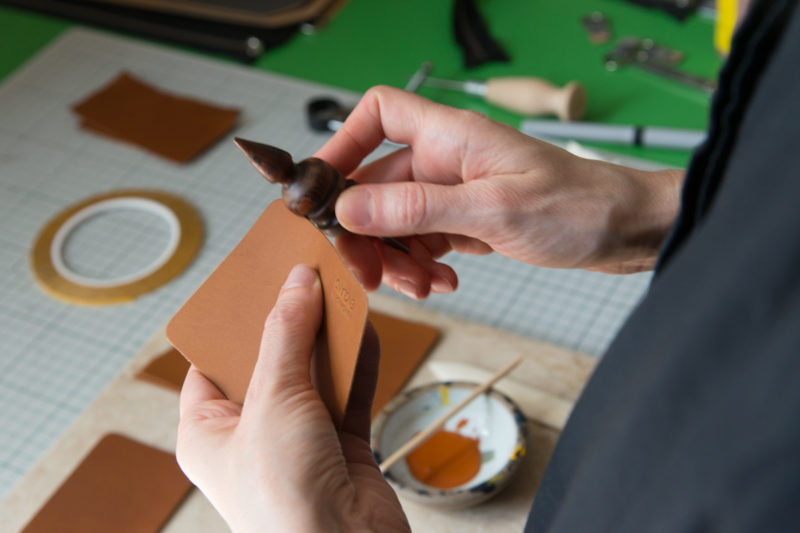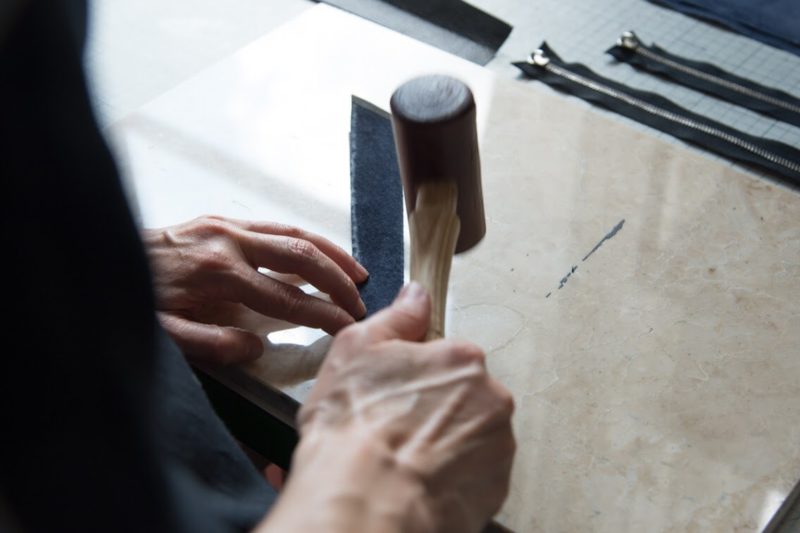How to Determine the Quality of Leather: A Beginner’s Guide
Being a popular material, consumers are faced with replicas of leather items, which has become a rampant problem that plagues the leather industry. The abundance of variety of the different grades of leather available in the market leads to this problem. Therefore, to better understand why some leather products are priced higher than others and avoid purchasing poor quality leather replicas, you need to equip yourself with some fundamental leather education.
The quality of the leather is dependent on numerous factors. These factors include the breed of the animal hide from which the leather is obtained, the climate in which the animal is primal to and so forth. Even the cut from which the hide is obtained makes a world of difference in leather quality. Additionally, leather quality can also be affected by the tanning and finishing process part of the leather production.
Therefore, you need to know how to identify the different grades of leather and how to check leather quality via telltale signs. This article is directed towards just that as we’ll provide a brief overview and guide you through the various leather grades and check for excellent leather quality before indulging in a purchase.
To make things easy to grasp, we’ll break down the different grades of leather from the best quality of leather to the worst. Additionally, we’ll also provide you with insights that dictate the characteristics of each grade of leather.
What is Leather Grades, And Why Does it Matter?
Despite there being no formal standardised grading system for leather, most manufacturers are in consensus while ranking different leather grades based on durability and aesthetic.
Full-grain leather is the most premium quality of leather, followed by top-grain leather, split leather, and bonded leather.
It’s essential to know these technicalities because the phrase ‘genuine leather’ is often used in the leather industry. This is, however, an umbrella term that can be used for either full-grain leather, top-grain leather, and split leather. So don’t be under the misconception that genuine leather always refers to full-grain leather.
That being said, let’s now take a closer look at these different types of leather grades and their characteristics.
-
Full Grain Leather
The most sought after form of leather, full-grain leather, is characterised by its luxurious, smooth surface. It’s composed of durable and taut leather fibres because it has not been snuffed, sanded, or buffed to remove imperfections from its surface. This property allows it to withstand wear and tear. Rather than wearing out, it develops a thin patina that protects the layer from corroding and elevates the aesthetic.
Aniline and semi-aniline are the two subcategories of this leather and are commonly used in making premium footwear, purses and bags.
-
Top Grain Leather
The second-highest leather quality of the high-end category of leathers, top-grain leather, is more pliable than full-grain leather. However, its surface stands sanded, which leads to pigmentation that imparts a plastic feel to this leather and makes it less breathable. But it’s due to this patina, top-grain leather is stain resistant and is durable.
It’s less expensive than full-grain leather and is more readily available, making it a commonly used material in the leather industry.
-
Split Grain Leather
Due to external factors, sometimes a part of leather gets splintered off. Such a grade of leather is considered to be split-grain and doesn’t contain any of the hide’s grains. Therefore, it’s regarded as an inferior grade of leather as it’s not durable and weathers away with time.
Finished split leather is often coated with a polymer and embossed to make it look like natural full-grain leather.
-
Bonded Leather
The lowest leather quality, bonded leather, consists of impurities like leather dust and vinyl. it’s manufactured using shreds of leather from leftover scraps, which are mulched and mixed into a pulp slurry, then spread onto a fibre cloth. Bonded leather may contain as little as 20% of actual fibre, so it’s considered the most inferior leather.
However, this leather is environmentally friendly as it’s produced using recycled leather and other materials that would otherwise be disposed of.
How to Determine the Quality of Leather?
Although there isn’t a definitive rule as to how you can determine the quality of the leather you’re purchasing, there are specific guidelines you can follow. These telltale signs will help you identify the characteristics of good quality leather goods.
-
The Smell of the Leather
Premium quality leather has a distinctive musty, natural odour. So the first thing you should try and identify is the musty odour. Fake leather goods usually have a synthetic, plastic-like smell, so try and remember the natural odour that good quality leather goods are characteristic of.
-
How Does The Leather Feel?
The texture of the leather also helps to distinguish genuine leather from fake. If the leather is stiff and plasticky or has blemishes in its make, it’s likely to be machine-made and out of cheap leather.
Good quality leather goods have a characteristic firm exterior. So if a material simply dips when pressed and bounces back up, chances are that subpar leather is used.
-
Notice the Stitching Details
A good leather quality product is synonymous with excellent stitching and finishing. Flaws in stitching or the external appearance, or even the lining of a product indicate inferior quality.
-
Are The Edges Properly Burnished?
Another common telltale sign to identifying genuine leather is its edges. If the edges are blue, it means that the leather is not tanned correctly. Also, keep in mind that good quality leather goods tend to have imperfect edges. Thus, if you notice a layer of paint on the edges to hide these blemishes, chances are that it’s subpar leather.
-
The Overall Feel of the Product
Imperfection is a sign of good quality leather goods. Therefore, check the surface for little ‘pebbles’ and pores. If the surface is very smooth and like plastic, the material used is synthetic and not fibre.
Conclusion
Due to the rise in popularity of leather as a material, manufacturers have started to compromise on the quality of their leather products. The abundance of these defective leather goods floating in the market makes it very difficult for consumers to distinguish between real and fakes. Consumers tend to be gullible and go by the “genuine leather” or “made from leather” tag – something that devious marketers try and take advantage of.
That’s precisely why you need to identify the different grades of leather before you purchase a leather item.
Despite this read, if you’ve any doubts and intend to further explore the different grades of leather and their characteristics, you can always visit our website. We, at CreateLab, provide you with all the leathercrafting tools and resources you need to become an expert in the field of leathercrafting.





